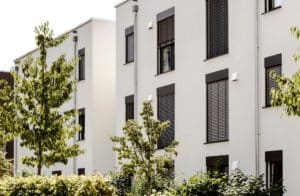April 10, 2024
Luxury homes are synonymous with indulgence. With sprawling square footage, high-end finishes and customised amenities, they allow homeowners to live the good life every day. These properties often prioritise comfort, aesthetics and convenience over considerations like environmental impact.
Yet in today’s world of climate change and resource scarcity, even luxury homes must find ways to reduce their eco-footprint. The good news is homeowners don’t have to choose between sustainability and indulgence. With thoughtful design and technology integration, luxury homes can incorporate environmentally friendly features without compromising on aesthetics or amenities.
Luxury homes and their sustainability issues
Luxury homes are defined by their expansive square footage, high-end finishes, and customised amenities that indulge homeowners. Features like home theatres, wine cellars and heated pools are standard in these lavish estates, but the large size and extensive systems of luxury homes inherently lead to high energy and water usage.
These indulgences come at the expense of the environment through excessive resource consumption and carbon emissions. The materials used to construct luxury homes are often chosen for aesthetic appeal too, rather than their environmental friendliness. The likes of steel and polished concrete may look stylish but they come at a cost to the planet.
As climate change progresses, luxury homeowners can no longer ignore the substantial environmental repercussions of their homes. The luxury sector needs to find ways to adapt and incorporate eco-conscious practices and technologies into these homes without sacrificing the expected comforts and delights.
Strategies for sustainability
Sustainable materials
The materials used to build and furnish luxury homes present ample opportunity for more eco-friendly selections. When sourcing construction materials, choosing recycled, renewable or reclaimed options reduces waste and environmental impact.
Opulent kitchens and baths can be created using recycled glass counters or responsibly harvested wood cabinets; flooring can come from renewable bamboo or reclaimed sources. There are other ways to be more eco-friendly. Non-toxic paints and finishes avoid unhealthy fumes, while locally sourced materials support area businesses while minimising transport emissions.
Smart material selection maintains the beautiful, quality finishes luxury homeowners desire, with the environment in mind. When renovating or building new estates, consult with sustainability experts to identify environmentally friendly alternatives to conventional luxury materials. With creativity and diligence, homes can be both spectacular and sustainable.
Water conservation
Luxury homes typically consume far more water than average households but strategic water management helps to preserve this limited resource. Luckily there are various solutions, including installing low-flow plumbing fixtures, implementing greywater systems to reuse water on-site and utilising drought-tolerant landscaping.
Low-flow showerheads, toilets, faucets, and other fixtures restrict water flow while still providing luxurious pressure and performance. Meanwhile, greywater systems capture wastewater from sinks, showers, and appliances, filtering and rerouting it for landscape irrigation and other non-potable uses. Homeowners can further reduce consumption while still enjoying lavish amenities like pools and spas through simple measures such as switching to natural pools to remove chemical usage and heating costs, installing covers to reduce evaporation and adding efficient pumps and filters.
Water is a fundamentally critical resource for life, so its thoughtful usage and conservation in luxury estates is a key element of environmental sustainability. With some elegant solutions, high-end homes can dramatically reduce water waste.
Renewable energy
One of the biggest impacts luxury homes can make is transitioning to renewable energy sources. Installing solar panels allows a home to generate its own emissions-free electricity. Typical solar setups involve roof panels plus batteries to store excess generation, but high-end smart homes may also integrate software to optimise solar energy usage throughout the home’s systems.
Though solar requires an upfront investment, it pays off through utility bill savings, and will pay for itself in just a few years. Similarly, heat pumps can be added for an emission-free way of heating your home without the need to rely on fossil fuels.
Solar panels and geothermal equipment can be seamlessly incorporated into home design. Underground geothermal setups have no visible footprint, while roof solar systems can be attractively integrated into rooflines or covered with non-functional panels to hide infrastructure. Landscaping features like hedges can also be used to disguise ground-level equipment. The right design enables luxury estates to embrace renewables without aesthetic sacrifice.
Environmental architecture
Sustainable design principles are becoming increasingly common in luxury construction as developers aim to reduce environmental impact without compromising on luxury or comfort. Eco-conscious architecture incorporates green building features like rainwater harvesting systems to conserve resources or green roofing that lowers heating costs.
Architects are also designing residences that seamlessly blend with the natural landscape through organic shapes and extensive use of natural light and ventilation. The eco-conscious architecture movement creates luxury spaces that are sensitive to the environment by implementing green technologies and design.
Energy efficiency
Beyond renewables, luxury homes can also reduce footprints through smart home technology. Advanced automation and sensing allows fine-tuned management of lighting, temperature, appliance usage and more. This optimises energy efficiency throughout the home, but features like motorised window blinds can also minimise heating and cooling needs. Smart technology can also be integrated with renewables to get the most out of green energy generation and storage.
Implementing energy efficient technologies is one of the most impactful steps luxury homeowners can take. Upgrading appliances to energy-efficient models, installing smart thermostats, adding insulation and replacing windows for double- or triple-glazed alternatives are simple ways to reduce energy waste. Luxury homes can also integrate advanced solutions like building automation controls to optimise energy usage, lowering utility bills and environmental impact while retaining home comforts.
Creating an environmentally sustainable luxury home is within reach. With clever implementation of efficiency upgrades, conservation measures, renewables and eco-conscious materials, luxury homeowners can reduce their environmental footprint without sacrificing aesthetics or indulgences. With conscientious effort, luxury homeowners can have it all – sumptuous amenities, conscience-free comfort and stewardship of our planet.



















